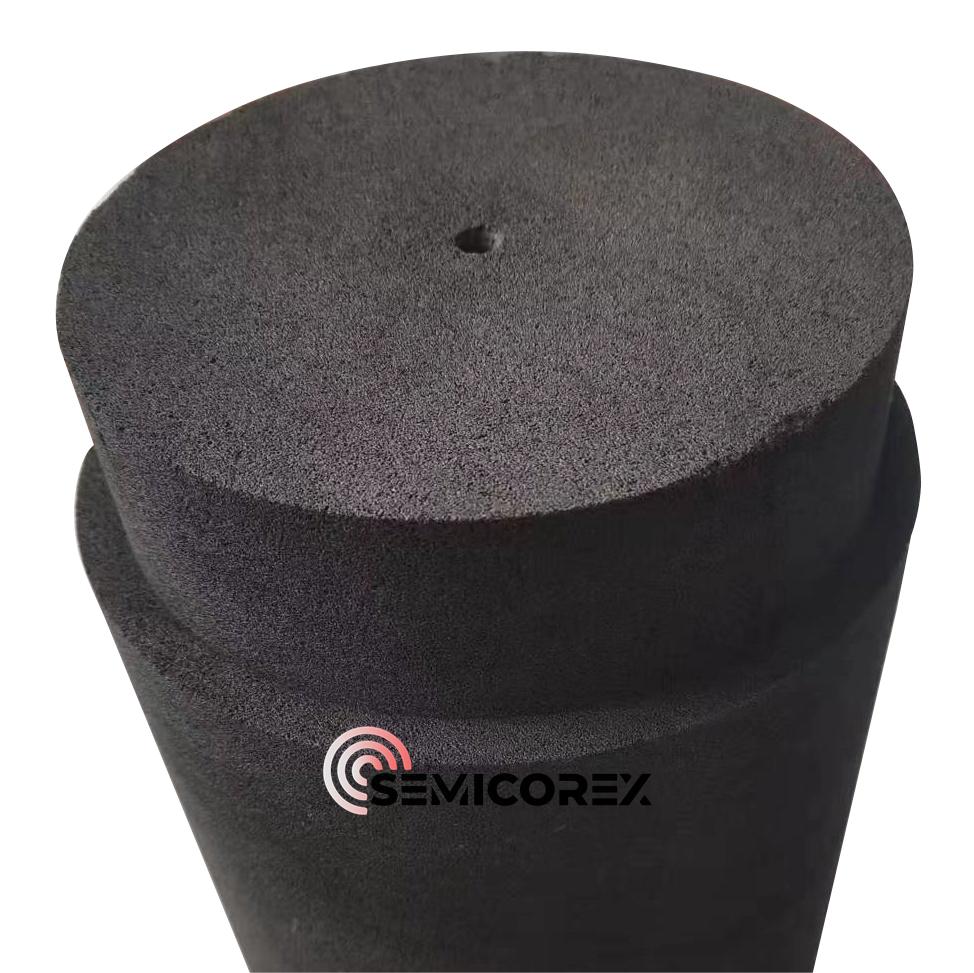
- English
- Español
- Português
- русский
- Français
- 日本語
- Deutsch
- tiếng Việt
- Italiano
- Nederlands
- ภาษาไทย
- Polski
- 한국어
- Svenska
- magyar
- Malay
- বাংলা ভাষার
- Dansk
- Suomi
- हिन्दी
- Pilipino
- Türkçe
- Gaeilge
- العربية
- Indonesia
- Norsk
- تمل
- český
- ελληνικά
- український
- Javanese
- فارسی
- தமிழ்
- తెలుగు
- नेपाली
- Burmese
- български
- ລາວ
- Latine
- Қазақша
- Euskal
- Azərbaycan
- Slovenský jazyk
- Македонски
- Lietuvos
- Eesti Keel
- Română
- Slovenski
- मराठी
- Srpski језик
Porous Graphite for SiC Crystal Growth
2024-05-13
Currently, most SiC substrate manufacturers use a new crucible thermal field process design with porous graphite cylinders: placing high-purity SiC particle raw materials between the graphite crucible wall and the porous graphite cylinder, while deepening the entire crucible and increasing the crucible diameter. The advantage is that while the charging volume increases, the evaporation area of the raw materials is also increased. The new process solves the problem of crystal defects, which caused by the recrystallization of the upper part of the raw material as the growth progresses on the surface of the source material, affecting the material flux of sublimation. The new process also reduces the sensitivity of the temperature distribution in the raw material area to crystal growth, improves and stabilizes the mass transfer efficiency, reduces the impact of carbon inclusions in the later stages of growth, and further improves the quality of SiC crystals. The new process also uses a seedless crystal support fixation method that does not stick to the seed crystal, allowing free thermal expansion and conducive to stress relief. This new process optimizes the thermal field and greatly improves the efficiency of diameter expansion.
The quality and yield of SiC single crystals obtained by this new process are heavily dependent on the physical properties of crucible graphite and porous graphite. The urgent demand for high-performance porous graphite not only makes porous graphite extremely expensive, but also causes a serious shortage in the market.
Basic performance requirements of porous graphite
(1) Appropriate pore size distribution;
(2) High enough porosity;
(3) Mechanical strength that meets processing and use requirements.
Semicorex offers high-quality porous graphite parts. If you have any inquiries or need additional details, please don't hesitate to get in touch with us.
Contact phone # +86-13567891907
Email: sales@semicorex.com





